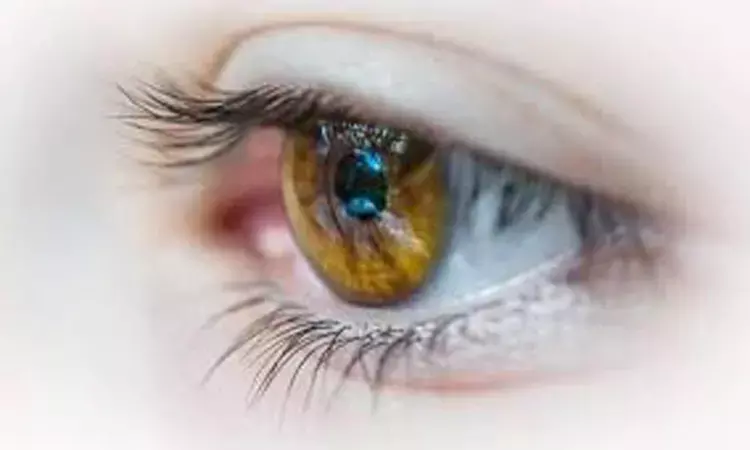- Home
- Medical news & Guidelines
- Anesthesiology
- Cardiology and CTVS
- Critical Care
- Dentistry
- Dermatology
- Diabetes and Endocrinology
- ENT
- Gastroenterology
- Medicine
- Nephrology
- Neurology
- Obstretics-Gynaecology
- Oncology
- Ophthalmology
- Orthopaedics
- Pediatrics-Neonatology
- Psychiatry
- Pulmonology
- Radiology
- Surgery
- Urology
- Laboratory Medicine
- Diet
- Nursing
- Paramedical
- Physiotherapy
- Health news
- Fact Check
- Bone Health Fact Check
- Brain Health Fact Check
- Cancer Related Fact Check
- Child Care Fact Check
- Dental and oral health fact check
- Diabetes and metabolic health fact check
- Diet and Nutrition Fact Check
- Eye and ENT Care Fact Check
- Fitness fact check
- Gut health fact check
- Heart health fact check
- Kidney health fact check
- Medical education fact check
- Men's health fact check
- Respiratory fact check
- Skin and hair care fact check
- Vaccine and Immunization fact check
- Women's health fact check
- AYUSH
- State News
- Andaman and Nicobar Islands
- Andhra Pradesh
- Arunachal Pradesh
- Assam
- Bihar
- Chandigarh
- Chattisgarh
- Dadra and Nagar Haveli
- Daman and Diu
- Delhi
- Goa
- Gujarat
- Haryana
- Himachal Pradesh
- Jammu & Kashmir
- Jharkhand
- Karnataka
- Kerala
- Ladakh
- Lakshadweep
- Madhya Pradesh
- Maharashtra
- Manipur
- Meghalaya
- Mizoram
- Nagaland
- Odisha
- Puducherry
- Punjab
- Rajasthan
- Sikkim
- Tamil Nadu
- Telangana
- Tripura
- Uttar Pradesh
- Uttrakhand
- West Bengal
- Medical Education
- Industry
Tonometry for measuring IOP may ba potential pathway for virus, disease transmission

WASHINGTON - Tonometry eye test could expel tear droplets up to a meter away from the patient, potentially spreading viruses that cause COVID-19 and other pathogens, find researchers.
In Physics of Fluids, by AIP Publishing, scientists from the Indian Institute of Science and the Narayana Nethralaya Foundation explain how tears ejected from the eye during a procedure that tests for glaucoma can theoretically transmit disease.
Ophthalmologists use a tonometer to measure the pressure in an eye. A high-pressure reading can indicate a risk for developing glaucoma. The instrument emits an air puff that hits the surface of the eye.
The researchers modeled the eye's response to this puff and took high speed images of eyes undergoing the procedure. They were specifically looking at the liquid in the eye and how it responded.
As the eye was hit with the air puff, the film of tears on the surface expanded into a sheet that spilled out over the eyelids. The cornea also deflected away from the incoming air.
"The cornea is like an elastic surface. So, as it deforms and as it recovers its shape, it gives the eye an additional kick," said author Saptarshi Basu. "It's a capillary wave merged with this corneal deflection, which gives rise to a consolidated wave, and that is what makes the tear fluid expand and go out."
The waves moving within the eye and tear liquid eventually become unstable, and the tears break up into droplets. The team tracked the speed of those droplets as they left the eye and predicted they could travel up to a meter away from the patient. The distance depends on the air flow within the room.
Eyes with more tears created more droplets than dry eyes. The scientists recommend not using eye drops before the glaucoma test unless medically necessary.
"It is not just limited to SARS-CoV-2. It can be extrapolated to other types of pathogens as well," said Basu. "What you think is a very safe, noncontact procedure, even then, one needs to be a little careful."
This work can help eye care practitioners to develop and follow health and safety protocols, like improved room ventilation and cleaning nearby instruments and surfaces, that may not have been considered necessary in the past.
https://aip.scitation.org/doi/10.1063/5.0061956
Hina Zahid Joined Medical Dialogue in 2017 with a passion to work as a Reporter. She coordinates with various national and international journals and association and covers all the stories related to Medical guidelines, Medical Journals, rare medical surgeries as well as all the updates in the medical field. Email: editorial@medicaldialogues.in. Contact no. 011-43720751
Dr Kamal Kant Kohli-MBBS, DTCD- a chest specialist with more than 30 years of practice and a flair for writing clinical articles, Dr Kamal Kant Kohli joined Medical Dialogues as a Chief Editor of Medical News. Besides writing articles, as an editor, he proofreads and verifies all the medical content published on Medical Dialogues including those coming from journals, studies,medical conferences,guidelines etc. Email: drkohli@medicaldialogues.in. Contact no. 011-43720751


